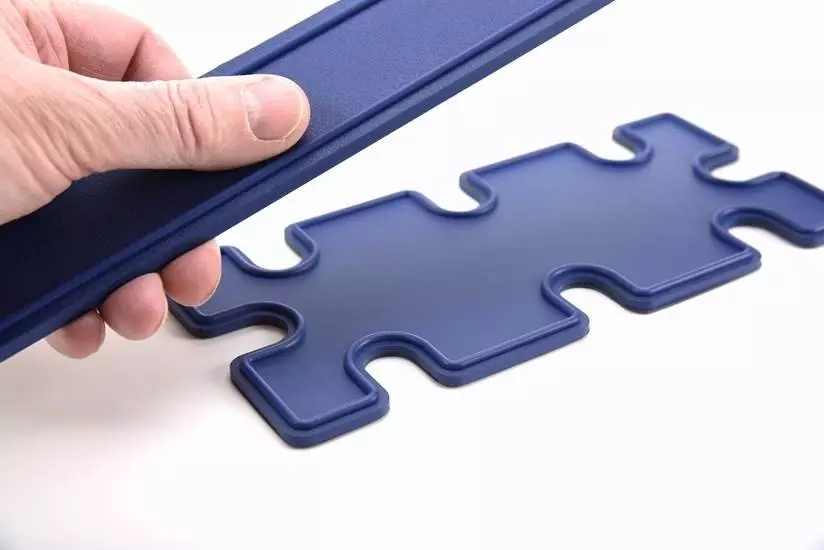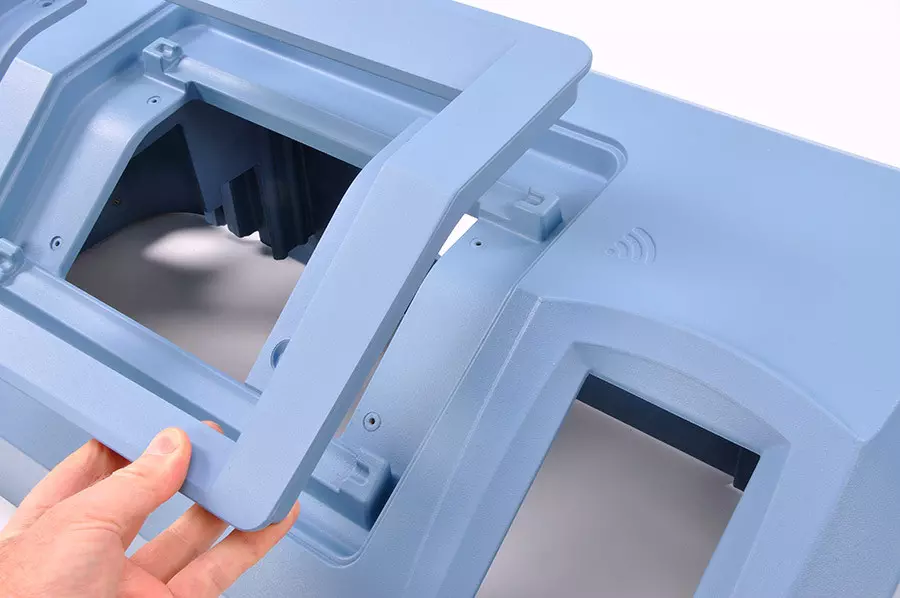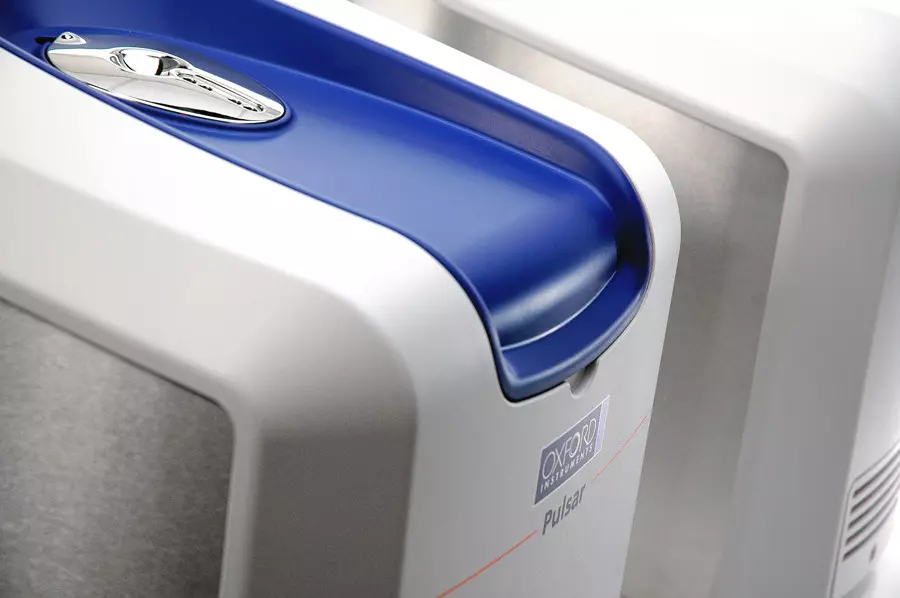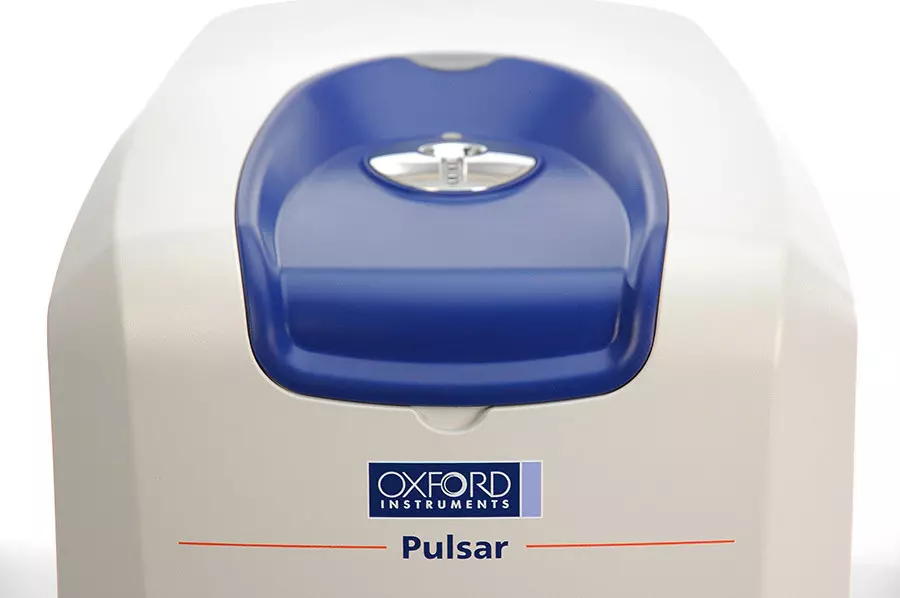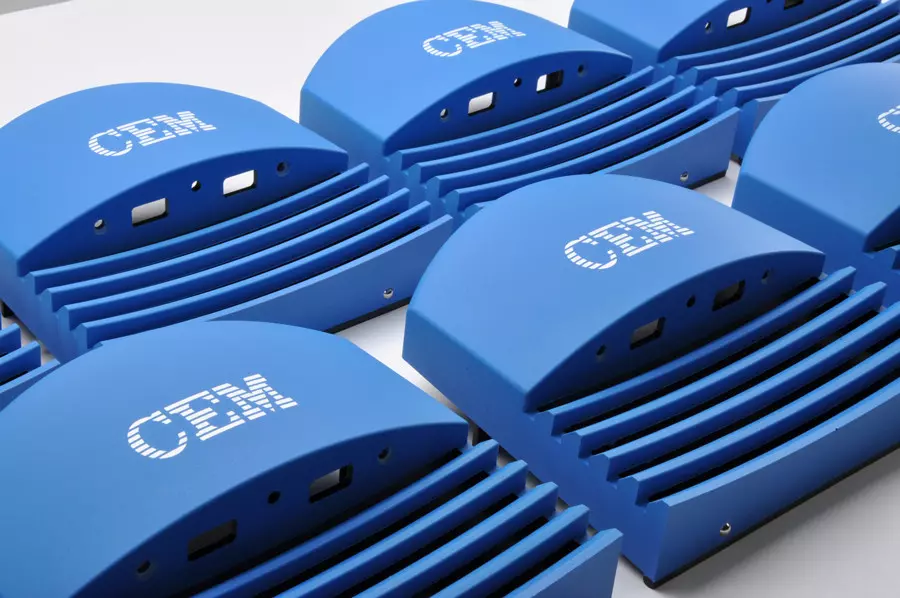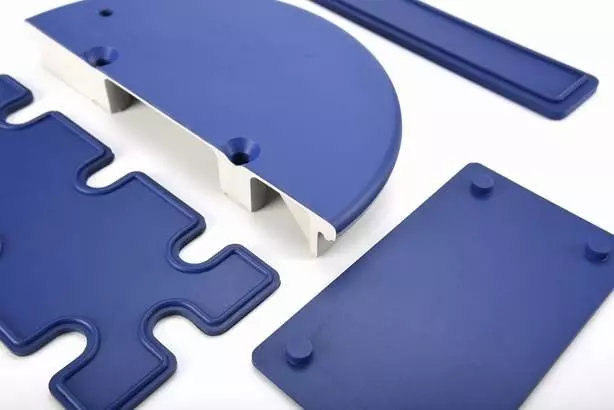Rapitypes pioneered the application of In Mould Coating and is now a leading provider of products exhibiting these characteristics. In-mould coatings are as the name suggests the result of applying a decorative surface or technical finish to a moulded part prior to the moulding material being introduced into the tool. Finishes such as decorative paints, soft touch materials and RFI shielding for example, are applied directly to the tool surface under controlled conditions and as part of the moulding cycle. This is then followed by the PU RIM material which is introduced in the usual way.
In Mould Coating (or in-mould painting) has a number of benefits and can provide parts which are unobtainable in any other RIM process.
Decorative finishes
These are typically a single colour applied to the tool surface prior to the introduction of the RIM material. The colour coat is chemically bonded to the PU and in general we will use the same pigment in the PU material to ensure a good depth of colour and ensure this remains even if the part is subject to surface wear. The surface texture of the finished moulding will be determined by the tool surface and so it’s possible to achieve complete uniformity of finish across any, and all batches from a given tool.
UV Stabilisation
RIM PU is not UV stable and if parts are left in daylight for long periods they will start to discolour. This effect can be seen on all but those parts with very dark pigments. UV stable coatings largely prevent this discoloration – although they will not prevent parts subject to direct sunlight from being affected (please contact us to enquire). We always recommend that parts or surfaces that will be subjected to prolonged exposure to light should be pigmented in the bottom third of the greyscale above black.
Soft-touch and in-mould gaskets
Of course In Mould Coating can also provide significant thicknesses as the layers are applied, and this characteristic can be exploited to provide soft touch and energy absorbing surfaces. It can also be used to create integral gaskets and glands directly on the surface of the parts. Sealing beads can be created as a continuous extension of a surface that might be mated to another for example. Enclosures can be made to seal at a given surface with a raised bead that could be radial or perpendicular to a face. Glands can extend across a wide area or be restricted to a close proximity annulus for example.
Benefits of Rapitypes Reaction Injection Moulding (RIM moulding)
- Low-cost tooling for large parts
- Thin walled components (1.5mm)
- Short lead-times for large components
- Low volume production components
- Large one off or prototype component manufacture up to 2000mm long
- Low capital investment.
- Short or long runs
- Minimum set up
- Cosmetic surface finishing
- In Mould Coating (no need for post finishing)
- Integral gaskets and glands
- Flame retardant materials (V0)
- Rigid foam buoyant water proof materials
- Soft foam materials
- High impact PP like elastomer
- Encapsulation and over-moulding
- Roto RIM moulded hollow components
RIM PU is the result of a reaction between two liquid components isocyanate and polyol as they are injected into a closed mould at low pressure. The two components are mixed together as they flow into the mould as a low-viscosity liquid and the reaction, which increases the temperature and the pressure at the surface of the tool, forms the polyurethane part in the tool cavity.

